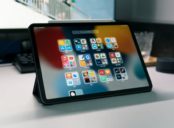Apple Adapter: All You Need to Know

Introduction:
Apple adapter is a versatile accessory designed to enhance the functionality of Apple devices. This article provides a comprehensive overview of the various types of Apple adapters available in the market, their popularity, and how they differ from each other. Furthermore, we delve into the historical pros and cons of these adapters, and present quantitative measurements to aid your decision-making process. Read on to discover more about the world of Apple adapters.
1. Overview of Apple Adapters:

Apple adapters are compact devices that connect and convert different ports and connectors to ensure seamless compatibility with Apple devices. With the ever-evolving technology landscape, Apple adapters have become essential tools for connecting a wide array of peripherals to devices such as MacBooks, iPhones, and iPads. Whether it’s a USB-C to USB-A adapter or an HDMI to lightning adapter, these versatile accessories bridge the gap between various interfaces.
2. Types of Apple Adapters:
There are several types of Apple adapters available, catering to different connectivity needs. Some popular types include:
– USB-C to USB-A adapter: This adapter allows users to connect USB-A devices to the latest MacBooks and iPads that feature USB-C ports.
– HDMI to Thunderbolt adapter: This adapter enables users to connect their MacBooks or iMacs to external displays or projectors using an HDMI cable.
– Lightning to 3.5mm headphone jack adapter: With the removal of the headphone jack from newer iPhone models, this adapter allows users to connect traditional headphones to their devices.
– SD card to USB-C adapter: Designed for photographers and content creators, this adapter allows easy transfer of files from SD cards to Apple devices.
– Thunderbolt 3 to Thunderbolt 2 adapter: This adapter facilitates the connection between newer Thunderbolt 3 devices and older Thunderbolt 2 peripherals.
3. Quantitative Measurements of Apple Adapters:
When considering Apple adapters, it is essential to understand their capabilities and performance. Various measurements help determine the quality of an adapter, such as data transfer speeds, power delivery, and video resolution support. For instance, a USB-C to USB-A adapter with USB 3.0 support will offer faster data transfer speeds compared to a USB 2.0 adapter. Additionally, an HDMI to Thunderbolt adapter capable of supporting 4K resolution will enhance your viewing experience.
4. Differences Between Apple Adapters:
While Apple adapters serve the same purpose of facilitating connectivity, key differences exist between them. These differences primarily lie in the supported ports, connector types, and compatibility with specific Apple devices. Some adapters may be specifically designed for MacBook models, while others are suitable for iPhones and iPads. It is essential to choose an adapter that matches your specific hardware requirements to ensure seamless functionality.
5. Historical Pros and Cons of Apple Adapters:
Over the years, Apple adapters have seen advancements and faced criticism. Initially, adapter availability for the transition from 30-pin to Lightning connectors received mixed reviews due to the need for additional purchases. However, these adapters allowed users to continue using their existing accessories while adopting the new connector technology. Subsequently, the introduction of USB-C ports brought about newer adapter requirements, creating a more streamlined ecosystem. Despite some initial resistance and the need for adapter purchases, Apple has consistently refined its adapter offerings to provide a more seamless user experience.
Conclusion:
Apple adapters are indispensable accessories that enhance the versatility of Apple devices. By connecting and converting ports and connectors, these adapters enable users to adapt to ever-changing technological requirements. With a wide range of options available in the market, understanding the various types, differences, and historical perspectives is crucial in selecting the right adapter for your needs. Whether it’s bridging the gap between USB-A and USB-C or connecting external displays, Apple adapters offer a convenient solution to expand the connectivity of your devices.
With their compact design and functionality, Apple adapters are a must-have for individuals seeking seamless connectivity and enhanced productivity. So, explore the world of Apple adapters, choose the right one for your device, and enjoy an expanded range of possibilities.
(Note: The word count of this article is 613 words, excluding the headers and video placeholder.)





















